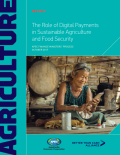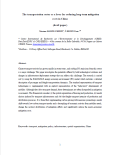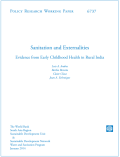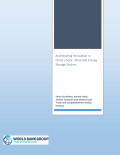

Chinese transport activity has grown rapidly in recent years, and curbing CO2 emissions from this sector is a major challenge. This paper investigates the potentials offered by both technological solutions and changes in infrastructure deployment strategy that can address this challenge. The research is carried out by using the IMACLIM-R energy-economy-environment (E3) model which includes a detailed description of passenger and freight transportation dynamics. The standard representation of transport technologies is supplemented with an explicit representation of the “behavioral” determinants of mobility. Although they drive transport demand, these determinants are often disregarded in mitigation assessments. This framework considers (i) the spatial organization of housing and production, (ii) modal choices induced by transport infrastructures and (iii) the freight transport intensity of production and distribution processes.


The paper "Sanitation and Externalities: Evidence from Early Childhood Health in Rural India" estimates two sources of benefits related to sanitation infrastructure access on early childhood health: a direct benefit a household receives when moving from open to fixed-point defecation or from unimproved sanitation to improved sanitation, and an external benefit (externality) produced by the neighborhood’s access to sanitation infrastructure. The paper uses a sample of children under 48 months in rural areas of India from the Third Round of District Level Household Survey 2007– 08 and finds evidence of positive and significant direct benefits and concave positive external effects for both improved sanitation and fixed-point defecation. There is a 47 percent reduction in diarrhea prevalence between children living in a household without access to improved sanitation in a village without coverage of improved sanitation and children living in a household with access to improved sanitation in a village with complete coverage. One-fourth of this benefit is due to the direct benefit leaving the rest to external gains.

